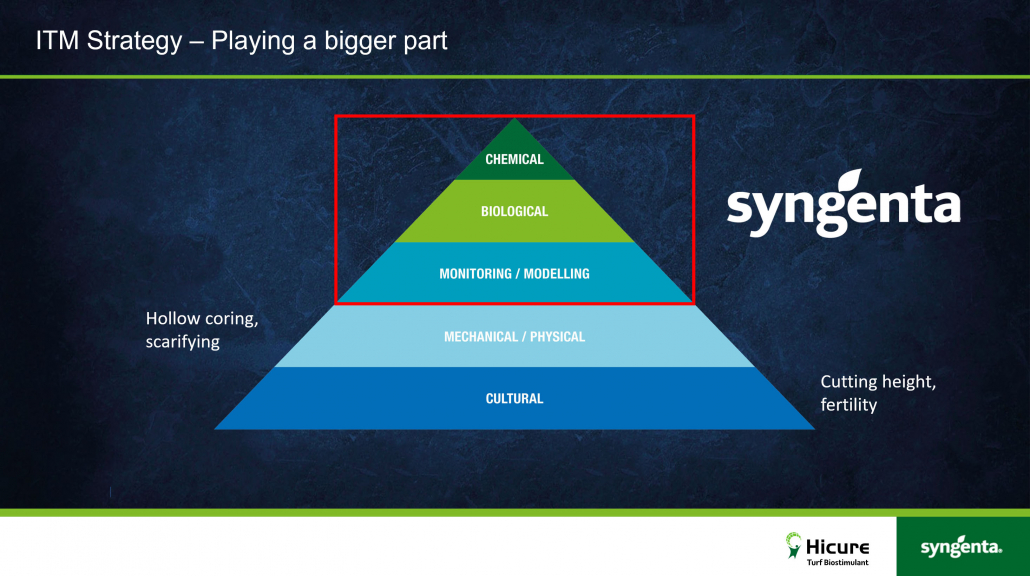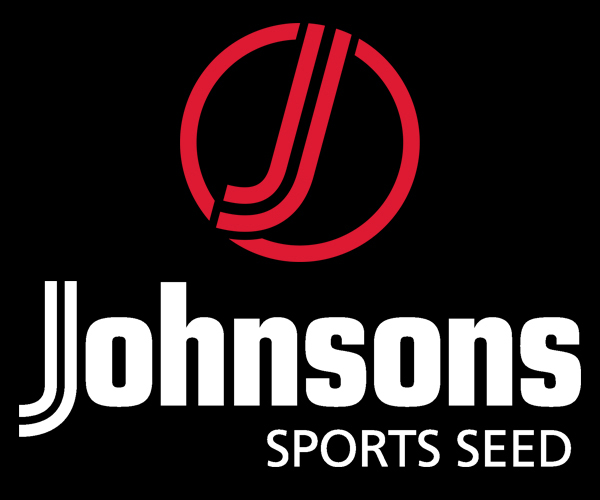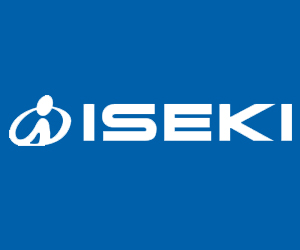Hicure strengthens ITM programmes
Hicure strengthens ITM programmes: Biostimulants offer an exciting chance to strengthen the role of Integrated Turf Management (ITM) in producing consistently high-quality playing surfaces.
Speaking at the launch of Hicure, the first biostimulant for turf from Syngenta, Professional Solutions Business Manager Daniel Lightfoot, reiterated cultural controls have always been, and remain, the primary mainstay of good practice for greenkeepers.

Hicure strengthens ITM programmes
“But whilst in the past they might have reached for a chemical solution as the next option, there are now real advances in monitoring and modelling of issues and the potential for biological solutions that are increasingly effective steps in the ITM process.”
He emphasised that chemicals remain a key part of greenkeepers’ armoury, with Syngenta’s commitment to continue to develop and extend new options, such as the introduction of Ascernity in the UK and Ireland earlier this year.
“However, we see that biologicals and biostimulants such as Hicure can genuinely complement and support existing technologies, particularly against a backdrop of challenging regulatory legislation” advocated Daniel.
“It is an area of real focus and huge investment. We’ve committed the same rigorous R&D approach to Hicure and future biostimulant developments as a new chemical product.
“That means we can support what is said with data and experience, and that turf managers can be confident it is fully tried and tested.”

Hicure strengthens ITM programmes
Digital support
Daniel Lightfoot believes that biostimulants can be better incorporated into ITM programmes with the support of innovative digital tools to aid monitoring and modelling of potential problems.
Tools such as Disease Forecasting, Growing Degree Day Calculator and historic weather and disease records, all available on the GreenCast website, build a picture of where and when actions can be proactively targeted to best effect.
Digital tools of the near future will look to predict precisely where efforts can be targeted, before the problems occur, he predicted.
“When you combine digital precision, with innovative biostimulant technology and proven chemical solutions, the top of the ITM pyramid takes the next step to producing the consistently better playing surfaces demanded by greenkeepers and players.”
For the latest industry news visit turfmatters.co.uk/news
Get all of the big headlines, pictures, opinions and videos on stories that matter to you.
Follow us on Twitter and Instagram for fun, fresh and engaging content.
You can also find us on Facebook for more of your must-see news, features, videos and pictures from Turf Matters.













